- Forum
- categories
- Announcements and miscellaneous
- General announcements
- Featured Users
- Featured User (5) in May 2014 is Chris Canaday from California/ Ecuador!
Featured User (5) in May 2014 is Chris Canaday from California/ Ecuador!
19k views
- Vishwanath
-
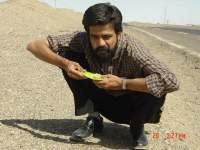 Less
Less- Posts: 6
- Karma: 1
- Likes received: 4
Re: May 2014 Featured User is Chris Canaday from California/ Ecuador, Interview Part 2
Chris,
You are quite an inspiration for a lot of people here in India (especially your long beard Keep up the good work, the sharing and most importantly the sharing and the importance to details that you provide.
Keep up the good work, the sharing and most importantly the sharing and the importance to details that you provide.
Once again hat-tip.
You are quite an inspiration for a lot of people here in India (especially your long beard
Once again hat-tip.
The following user(s) like this post: Elisabeth, Carol McCreary
Please Log in to join the conversation.
You need to login to replyRe: May 2014 Featured User is Chris Canaday from California/ Ecuador, Interview Part 2
Dear Chris,
Congratulations!! It is great to know more about you and your work. I'm proud of you.
Good luck and keep it up!!
Best regards,
F H Mughal
Congratulations!! It is great to know more about you and your work. I'm proud of you.
Good luck and keep it up!!
Best regards,
F H Mughal
F H Mughal (Mr.)
Karachi, Pakistan
Karachi, Pakistan
The following user(s) like this post: Carol McCreary
Please Log in to join the conversation.
You need to login to reply- secretariat
-
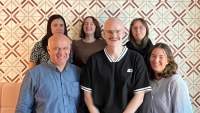 Topic Author
Topic Author- Moderator
- SuSanA secretariat currently allocates 2 full time person equivalents of time from members of GIZ Sustainable Sanitation Team: Arne Panesar, Alexandra Dubois, Maren Heuvels, Teresa Häberlein, Daphne Manolakos and Bettina-Sophie Heinz.
Re: May 2014 Featured User is Chris Canaday from California/ Ecuador, Interview Part 2
Part 2: About Chris’ opinions about the forum
What is making you write on the forum - what do you expect by making posts? How have you benefited yourself from using the forum?
I write on the Forum because I believe that Sustainable Sanitation (in particular, Ecological Sanitation) is one of the key ways that Mankind can straighten out its currently destructive relationship with Nature. By working together, we can figure out the details on how to best do this, how to spread the word, and how to make this change.
For this reason, I especially like to contribute to posts of projects that I think have a great potential to go to a massive scale at low monetary and environmental costs. In this, I am not just thinking about the 2.6 billion people who have no toilets, but all the Civilized World, at least where people want to be civilized with their neighbors, with Nature, and with future generations.
Cities are an aberration of Nature, with so many people clustered together, so separated from the ecosystem that supports them and decontaminates their waste. This is why many of my posts suggest ways to include more organisms in our systems and even more wild diversity of these organisms. My vision is that apartment buildings in the city, and in fact dwellings anywhere, should be covered with plants, via green roofs and vertical gardens, not just for show, but to treat wastewater and convert it back into useful products, including food. Furthermore, I believe we should not only abstain from putting a drop of wastewater into sewers, but also from putting a gram of solid waste into landfills (via recycling and the formation of EcoBricks, (www.ecobricks.org/how-to-make-an-ecobrick-2/)
I also agree with Ralf Otterpohl that we should strive to dissolve cities back into the countryside .
I invite Forum members to read a two-part interview in which I analyze the ridiculousness of water-based toilets and the logic behind UDDTs:
www.chekhovskalashnikov.com/water-sanitation/
www.chekhovskalashnikov.com/human-waste-disposal/
I have benefitted greatly from the exchange of information. For example, I recently got some excellent input on ABRs (Anaerobic Baffled Reactors), as I prepare to build some in an Achuar community.
Do your colleagues or people in your network also use the forum?
No, I am mostly on my own out in the rainforest and my closest colleagues mostly only speak Spanish and their native languages. My friend, Ron Lavigne, who builds treatment wetlands, is about 70 years old and has yet to take the leap into cyberspace. I like to think that my other international colleagues are all of you who are on the Forum.
(Applying ceramic tiles to the fresh cement of a ferrocement UDDT floor in an Achuar village. Note that the drop hole is 18 cm wide and has a point to accommodate a standard plastic funnel to catch the urine)
What don’t you like about the forum or about other forum users?
One frustration is that some Forum members do not seem to distinguish between science and status quo (or “conventional wisdom”), always wanting to “err on the side of safety” to the point of what we could call fecophobia (an irrational fear of feces). I suggest we should instead try to lean toward the side of universal coverage, remembering how much fresh and contagious excrement currently goes straight into the environment. I also think we should take an evidence-based approach, remembering that fresh feces represent the full danger and with each day of storage, degree of heating, or percent of drying, the danger gradually disappears. Has anyone ever documented pathogen transmission from feces that have dried and decomposed in the Tropics for over 6 months, or the Temperate Zone for over a year? We do, however, know that fresh feces can transmit all of our fecal pathogens (and UN troops could apparently give Cholera to Haiti if their sewage is dumped straight into the environment without treatment, en.wikipedia.org/wiki/2010%E2%80%9313_Haiti_cholera_outbreak).
Similarly, many seem to think that the only acceptable user interface is that of the flush toilet. Nonetheless, this is a matter of habits and culture and, less than 200 years ago, the flush toilet was the strange innovation and many did not want to use them, in part due to all the noise they make. I would say that we are human beings and we got to where we are by learning, adapting and sharing ideas. If cats throw dirt on their feces by instinct, what is to keep humans from learning this?
The Forum is a great place to circulate documents and get feedback, but I would suggest that we then try to integrate this feedback (at least as minority opinions), if it is supported by logic, science or evidence, unless there is firm logic, science or evidence to discard it. An example of this is the GIZ UDDT Technology Review, which I contributed to considerably, especially with respect to English style and grammar, but I cannot recommend anyone to read it because in various points it makes the illogical statement that the biosolids from single-chambered UDDTs with interchangeable containers are less finished and more dangerous than those from two-chambered UDDTs. This makes no sense unless the interchangeable containers they refer to were sealed plastic buckets that humidity could not evaporate out of, nor oxygen filter into. I asked about this, but never got a substantive response and instead was asked to “agree to disagree”. (Should we then ask the readers to “fuse to be confused”?). This is otherwise (almost entirely) an excellent, detailed document that we should all hopefully have at our fingertips and recommend to all.
In that same document and elsewhere, it is said that finished, processed feces should never be considered 100% safe. This may be accurate, especially given the difficulty of testing for every disease, but the same applies to soil, sex, flying on airplanes, and getting out of bed. Some seem to have a mindset in which the world can be divided between feces and non-feces; the latter can be converted into the former but not vice-versa, so eventually the entire world becomes feces.
It is also frustrating that sometimes very important questions are left unanswered. For example, in 2007 I sent a question to the Ecosanres Yahoogroup (which many of us were on before this Forum was activated), asking about the precise location of the wall dividing the urine part of a sit-down UDDT from the feces part, but no one ever answered. This is a key measurement, and certainly varies from one UDDT to another, but I think we should optimally all have an acceptable range of values at our fingertips. (It seems from various photos and my own experience that this should be roughly halfway along the hole in the seat, or a bit farther toward the front.)
If you could change something about the forum, what would it be?
It would be great to recruit more microbiologists, epidemiologists, psychologists, and other specialists to answer our key questions and to have a look at the systems we develop. Maybe we could somehow offer them something in exchange (e.g., proofreading or translation of texts).
Could the computer somehow be programmed to send unanswered questions on the Forum to one of the most indicated Forum members or outside experts? To some extent, moderators and other members already do this, but it would be excellent for no questions to be missed, especially now that we have so many members and so many messages.
I suggest we add more options for quick feedback than just liking a post or adding or subtracting karma points. These could include:
• Please give more support for the ideas expressed.
• I would like to put this into practice myself.
• This would be an excellent thesis topic.
• This is a great option for the billions who have no toilet.
• This is excellent for elegant applications.
• This is very environmentally sustainable.
• This seems to have an excessive environmental impact.
If we do this, members could then search for these items. Also, some of our thousands of members may prefer to only see posts that others have ticked with one or more of these items … or to receive all the posts ordered according to these items (with a delay of several days to allow standard members to tick these). This may be especially important now that the Forum has grown so much and the list of posts is sometimes very long. This would make it easier for the “silent majority” of members to give feedback, even if just ticking these items … and some privilege, such as searching, could hinge on ticking.
Sometimes when we log in we are taken to some starting page, or one’s own profile page, and it is hard to navigate back to the thread that we were looking at and wanting to contribute to. This could please be fixed.
It would be good to know the dates of the different posts when we do a search.
What is your advice to the forum moderators?
Keep up the good work.
Which topics or categories on the forum do you feel most passionate about?
I think this is fairly obvious, but since you asked…:
- Recycling of cover material in UDDTs (see above photo)
- Systems with great potential for mainstream acceptance.
- Treatment wetlands.
(The Free Minimalist UDDT. More info at inodoroseco.blogspot.com/2013/10/a-free-...ist-uddt-part-1.html
(This species of mushroom sometimes grows from the sacks of feces. Any help on identifying it would be appreciated.)
The model of UDDT we have developed with the Achuar, which requires less than half a sack of cement: www.flickr.com/photos/gtzecosan/sets/72157626993399782/
The Blue Diversion Toilet (EAWAG, EOOS, et al.) is a beautiful design with great potential, but I am still concerned about the continual, cyclic use of chlorine and the formation and accumulation of toxic chlorinated chemicals, together with the evolution of chlorine-resistant microbes within the membrane. For this reason, I suggest looking for more natural processes, including things like the aquarium shown below with plants and a few fish. A mycofilter may also be beneficial. (forum.susana.org/forum/categories/106-us...mit=12&start=24#6295)
+++++++++++++++++
Thank you Chris for taking the time to provide detailed answers to the interview questions, and we look forward to your continued contributions on the Forum!
Does anyone have any questions or comments for Chris? Have any of his posts had an impact on you or made you think differently about certain topics? Let us know in response to this thread!
[posted by Roslyn on behalf of the SuSanA secretariat]
What is making you write on the forum - what do you expect by making posts? How have you benefited yourself from using the forum?
I write on the Forum because I believe that Sustainable Sanitation (in particular, Ecological Sanitation) is one of the key ways that Mankind can straighten out its currently destructive relationship with Nature. By working together, we can figure out the details on how to best do this, how to spread the word, and how to make this change.
For this reason, I especially like to contribute to posts of projects that I think have a great potential to go to a massive scale at low monetary and environmental costs. In this, I am not just thinking about the 2.6 billion people who have no toilets, but all the Civilized World, at least where people want to be civilized with their neighbors, with Nature, and with future generations.
Cities are an aberration of Nature, with so many people clustered together, so separated from the ecosystem that supports them and decontaminates their waste. This is why many of my posts suggest ways to include more organisms in our systems and even more wild diversity of these organisms. My vision is that apartment buildings in the city, and in fact dwellings anywhere, should be covered with plants, via green roofs and vertical gardens, not just for show, but to treat wastewater and convert it back into useful products, including food. Furthermore, I believe we should not only abstain from putting a drop of wastewater into sewers, but also from putting a gram of solid waste into landfills (via recycling and the formation of EcoBricks, (www.ecobricks.org/how-to-make-an-ecobrick-2/)
I also agree with Ralf Otterpohl that we should strive to dissolve cities back into the countryside .
I invite Forum members to read a two-part interview in which I analyze the ridiculousness of water-based toilets and the logic behind UDDTs:
www.chekhovskalashnikov.com/water-sanitation/
www.chekhovskalashnikov.com/human-waste-disposal/
I have benefitted greatly from the exchange of information. For example, I recently got some excellent input on ABRs (Anaerobic Baffled Reactors), as I prepare to build some in an Achuar community.
Do your colleagues or people in your network also use the forum?
No, I am mostly on my own out in the rainforest and my closest colleagues mostly only speak Spanish and their native languages. My friend, Ron Lavigne, who builds treatment wetlands, is about 70 years old and has yet to take the leap into cyberspace. I like to think that my other international colleagues are all of you who are on the Forum.
(Applying ceramic tiles to the fresh cement of a ferrocement UDDT floor in an Achuar village. Note that the drop hole is 18 cm wide and has a point to accommodate a standard plastic funnel to catch the urine)
What don’t you like about the forum or about other forum users?
One frustration is that some Forum members do not seem to distinguish between science and status quo (or “conventional wisdom”), always wanting to “err on the side of safety” to the point of what we could call fecophobia (an irrational fear of feces). I suggest we should instead try to lean toward the side of universal coverage, remembering how much fresh and contagious excrement currently goes straight into the environment. I also think we should take an evidence-based approach, remembering that fresh feces represent the full danger and with each day of storage, degree of heating, or percent of drying, the danger gradually disappears. Has anyone ever documented pathogen transmission from feces that have dried and decomposed in the Tropics for over 6 months, or the Temperate Zone for over a year? We do, however, know that fresh feces can transmit all of our fecal pathogens (and UN troops could apparently give Cholera to Haiti if their sewage is dumped straight into the environment without treatment, en.wikipedia.org/wiki/2010%E2%80%9313_Haiti_cholera_outbreak).
Similarly, many seem to think that the only acceptable user interface is that of the flush toilet. Nonetheless, this is a matter of habits and culture and, less than 200 years ago, the flush toilet was the strange innovation and many did not want to use them, in part due to all the noise they make. I would say that we are human beings and we got to where we are by learning, adapting and sharing ideas. If cats throw dirt on their feces by instinct, what is to keep humans from learning this?
The Forum is a great place to circulate documents and get feedback, but I would suggest that we then try to integrate this feedback (at least as minority opinions), if it is supported by logic, science or evidence, unless there is firm logic, science or evidence to discard it. An example of this is the GIZ UDDT Technology Review, which I contributed to considerably, especially with respect to English style and grammar, but I cannot recommend anyone to read it because in various points it makes the illogical statement that the biosolids from single-chambered UDDTs with interchangeable containers are less finished and more dangerous than those from two-chambered UDDTs. This makes no sense unless the interchangeable containers they refer to were sealed plastic buckets that humidity could not evaporate out of, nor oxygen filter into. I asked about this, but never got a substantive response and instead was asked to “agree to disagree”. (Should we then ask the readers to “fuse to be confused”?). This is otherwise (almost entirely) an excellent, detailed document that we should all hopefully have at our fingertips and recommend to all.
In that same document and elsewhere, it is said that finished, processed feces should never be considered 100% safe. This may be accurate, especially given the difficulty of testing for every disease, but the same applies to soil, sex, flying on airplanes, and getting out of bed. Some seem to have a mindset in which the world can be divided between feces and non-feces; the latter can be converted into the former but not vice-versa, so eventually the entire world becomes feces.
It is also frustrating that sometimes very important questions are left unanswered. For example, in 2007 I sent a question to the Ecosanres Yahoogroup (which many of us were on before this Forum was activated), asking about the precise location of the wall dividing the urine part of a sit-down UDDT from the feces part, but no one ever answered. This is a key measurement, and certainly varies from one UDDT to another, but I think we should optimally all have an acceptable range of values at our fingertips. (It seems from various photos and my own experience that this should be roughly halfway along the hole in the seat, or a bit farther toward the front.)
If you could change something about the forum, what would it be?
It would be great to recruit more microbiologists, epidemiologists, psychologists, and other specialists to answer our key questions and to have a look at the systems we develop. Maybe we could somehow offer them something in exchange (e.g., proofreading or translation of texts).
Could the computer somehow be programmed to send unanswered questions on the Forum to one of the most indicated Forum members or outside experts? To some extent, moderators and other members already do this, but it would be excellent for no questions to be missed, especially now that we have so many members and so many messages.
I suggest we add more options for quick feedback than just liking a post or adding or subtracting karma points. These could include:
• Please give more support for the ideas expressed.
• I would like to put this into practice myself.
• This would be an excellent thesis topic.
• This is a great option for the billions who have no toilet.
• This is excellent for elegant applications.
• This is very environmentally sustainable.
• This seems to have an excessive environmental impact.
If we do this, members could then search for these items. Also, some of our thousands of members may prefer to only see posts that others have ticked with one or more of these items … or to receive all the posts ordered according to these items (with a delay of several days to allow standard members to tick these). This may be especially important now that the Forum has grown so much and the list of posts is sometimes very long. This would make it easier for the “silent majority” of members to give feedback, even if just ticking these items … and some privilege, such as searching, could hinge on ticking.
Sometimes when we log in we are taken to some starting page, or one’s own profile page, and it is hard to navigate back to the thread that we were looking at and wanting to contribute to. This could please be fixed.
It would be good to know the dates of the different posts when we do a search.
What is your advice to the forum moderators?
Keep up the good work.
Which topics or categories on the forum do you feel most passionate about?
I think this is fairly obvious, but since you asked…:
- Recycling of cover material in UDDTs (see above photo)
- To better control smell.
- To eliminate the need to constantly transport cover material to and fro.
- To inoculate new feces with an ever-evolving, diverse community of beneficial soil microbes.
- To never need to worry about dispersing into the environment processed feces that are “not 100% safe”.
- To remind users to wash their hands after adding this.
- (Thanks, Christoph, for making a list of my posts about this, which you mentioned in Mona’s thread, forum.susana.org/forum/categories/52-mob...mit=12&start=12#6550)
- Systems with great potential for mainstream acceptance.
- Treatment wetlands.
(The Free Minimalist UDDT. More info at inodoroseco.blogspot.com/2013/10/a-free-...ist-uddt-part-1.html
(This species of mushroom sometimes grows from the sacks of feces. Any help on identifying it would be appreciated.)
The model of UDDT we have developed with the Achuar, which requires less than half a sack of cement: www.flickr.com/photos/gtzecosan/sets/72157626993399782/
The Blue Diversion Toilet (EAWAG, EOOS, et al.) is a beautiful design with great potential, but I am still concerned about the continual, cyclic use of chlorine and the formation and accumulation of toxic chlorinated chemicals, together with the evolution of chlorine-resistant microbes within the membrane. For this reason, I suggest looking for more natural processes, including things like the aquarium shown below with plants and a few fish. A mycofilter may also be beneficial. (forum.susana.org/forum/categories/106-us...mit=12&start=24#6295)
+++++++++++++++++
Thank you Chris for taking the time to provide detailed answers to the interview questions, and we look forward to your continued contributions on the Forum!
Does anyone have any questions or comments for Chris? Have any of his posts had an impact on you or made you think differently about certain topics? Let us know in response to this thread!
[posted by Roslyn on behalf of the SuSanA secretariat]
Posted by a member of the SuSanA secretariat held by the GIZ Sector Program Water Policy – Innovations for Resilience
Located at Deutsche Gesellschaft für Internationale Zusammenarbeit (GIZ) GmbH, Bonn, Germany
Follow us on facebook: www.facebook.com/susana.org, linkedin: www.linkedin.com/company/sustainable-sanitation-alliance-susana.
Located at Deutsche Gesellschaft für Internationale Zusammenarbeit (GIZ) GmbH, Bonn, Germany
Follow us on facebook: www.facebook.com/susana.org, linkedin: www.linkedin.com/company/sustainable-sanitation-alliance-susana.
Attachments:
-
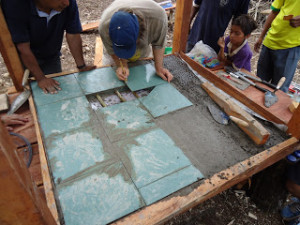 ChrisCanad....png.jpg
(Filesize: 33KB)
ChrisCanad....png.jpg
(Filesize: 33KB)
-
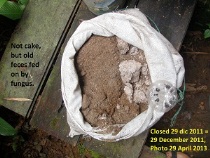 ChrisCanad....png.jpg
(Filesize: 20KB)
ChrisCanad....png.jpg
(Filesize: 20KB)
-
 ChrisCanad....png.jpg
(Filesize: 192KB)
ChrisCanad....png.jpg
(Filesize: 192KB)
-
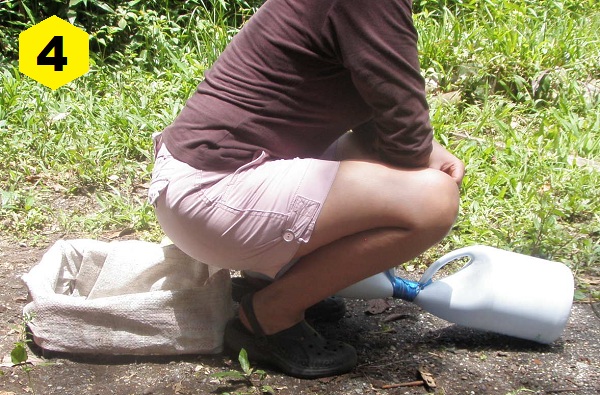 ChrisCanad....png.jpg
(Filesize: 160KB)
ChrisCanad....png.jpg
(Filesize: 160KB)
-
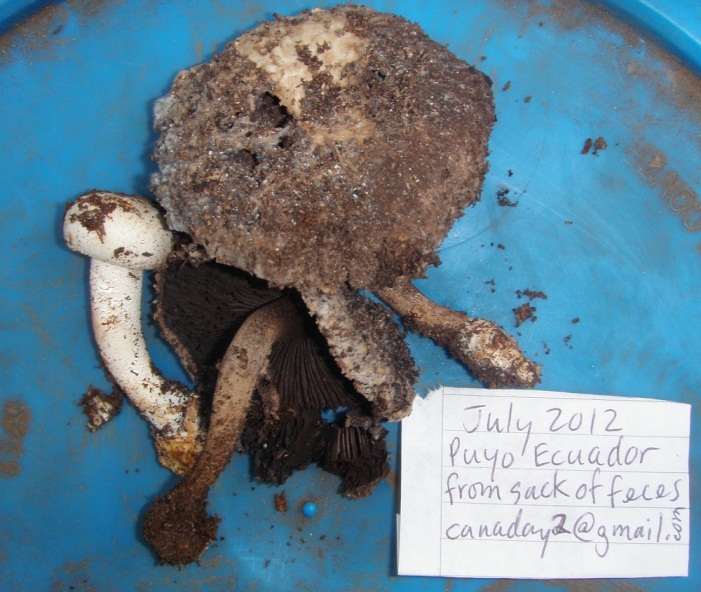 ChrisCanad....png.jpg
(Filesize: 150KB)
ChrisCanad....png.jpg
(Filesize: 150KB)
-
 ChrisCanad....png.jpg
(Filesize: 50KB)
ChrisCanad....png.jpg
(Filesize: 50KB)
The following user(s) like this post: zenrainman, AquaVerde
Please Log in to join the conversation.
You need to login to replyRe: May 2014 Featured User is Chris Canaday from California/ Ecuador!
Dear Krischan and Ben,
Sorry for the delay in responding. (I am still finishing Part 2 of the interview.)
Krischan, I have been forming some ideas about a link between chewed and fermented Manioc Beer and ancestral Amazonian Terra Preta, but have yet to put them into practice. It would be great to do a trial with some of the Achuar UDDT users, as they drink large amounts of Manioc Beer.
Ben, it is good to hear from you and I am glad you like my posts. I wish you great luck with the public UDDTs you are preparing in Montpellier, France. This is a very important project, as it will set an example with a high level of finish, for a demanding audience. Let me know if I can be of any help.
Best wishes,
Chris Canaday
Sorry for the delay in responding. (I am still finishing Part 2 of the interview.)
Krischan, I have been forming some ideas about a link between chewed and fermented Manioc Beer and ancestral Amazonian Terra Preta, but have yet to put them into practice. It would be great to do a trial with some of the Achuar UDDT users, as they drink large amounts of Manioc Beer.
Ben, it is good to hear from you and I am glad you like my posts. I wish you great luck with the public UDDTs you are preparing in Montpellier, France. This is a very important project, as it will set an example with a high level of finish, for a demanding audience. Let me know if I can be of any help.
Best wishes,
Chris Canaday
Conservation Biologist and EcoSan Promoter
Omaere Ethnobotanical Park
Puyo, Pastaza, Ecuador, South America
inodoroseco.blogspot.com
Omaere Ethnobotanical Park
Puyo, Pastaza, Ecuador, South America
inodoroseco.blogspot.com
Please Log in to join the conversation.
You need to login to reply- ben
-
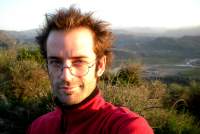
- Water and sanitation engineer
Less- Posts: 107
- Karma: 11
- Likes received: 57
Re: May 2014 Featured User is Chris Canaday from California/ Ecuador!
Very interesting read indeed.
Given your location and interest in fermented foods, have you experimented with lactic acid fermentation and the terra preta method at all?
Given your location and interest in fermented foods, have you experimented with lactic acid fermentation and the terra preta method at all?
Please Log in to join the conversation.
You need to login to reply- secretariat
-
 Topic Author
Topic Author- Moderator
- SuSanA secretariat currently allocates 2 full time person equivalents of time from members of GIZ Sustainable Sanitation Team: Arne Panesar, Alexandra Dubois, Maren Heuvels, Teresa Häberlein, Daphne Manolakos and Bettina-Sophie Heinz.
Re: May 2014 Featured User is Chris Canaday from California/ Ecuador!
The following are a series of interview questions that Chris kindly took the time to answer for us:
+++++++++++++++
Part 1: About Chris as a person and his work
You registered with SuSanA already on 26 Sep 2008 which is three years before the forum started (you have user number 88 so that’s really very early considering that we now have over 3500 members). What made you register then? And how did you find your way to the forum in 2011?
I have been very interested in UDDTs since I started building them in 2000, based on the Esrey et al. book “Ecological Sanitation”. I am convinced that this is one of the easiest ways to reduce the environmental impact of people on this planet, by not wasting so much water, not polluting the rivers, not spreading disease and instead returning the nutrients to the soils where they are needed, thus maybe even reducing the rate of deforestation. Teaching people to throw soil instead of water is much easier than asking them to forget about consumerism, cows and cars, or than asking people in the North to stop heating or cooling their homes.
With such an important topic, there is a lot of important information to be shared and refined, plus brainstorms to be unleashed.
How did I find SuSanA in 2008? I do a lot of web searches about EcoSan and I certainly found it that way. It is worth noting that this was likely still in the time in which almost no one had internet in their homes here in Puyo and my only access was by going to internet cafés in town, at night, after closing the Omaere Ethnobotanical Park and when we operated the Park 7 days a week. (Now we close on Mondays.) Now I have internet at home provided by the national Ecuadorian telephone company, which is a bit slow and unstable, but I am very glad to have it. We still do not have internet at Omaere, as it is a bit too far from phone lines, although wireless connection seems to be advancing here may be an option.
I became much more active in the SuSanA Forum when the excellent Ecosanres Yahoogroup shut down and we were all invited to switch to the Forum.
What is your nationality, where do you live now, and why?
I am from California in the United States and have been living in Ecuador, in South America, for the last 23 years, working in nature conservation projects. Ecuador is the “epicenter” of biodiversity on Planet Earth, so any contribution to conservation means more here than anywhere else. Extinction is forever and, when it happens, everyone loses.
Where and what did you study, and why?
I have a Bachelor’s Degree in Biology and Wildlife Management from Humboldt State University in Arcata in northern California. While doing that degree, my eyes were opened to the enormous biodiversity of tropical forests and, after finishing, I traveled for year and a half in Latin America volunteering in various national parks and other biological projects. Next, to have a broader background, I did a Master’s Degree in Conservation and Development in Latin America at the University of Florida at Gainesville, with a thesis on the impacts of deforestation on Amazonian birds in the Cuyabeno Reserve in northeastern Ecuador.
I studied these things because I love the life on this planet and I want to contribute to its continued survival, in all its diversity and glory.
What were your main employers, work locations or career milestones?
After graduating, I came back to Ecuador to let people know what my results were and the first day that I was back in Quito I was offered two jobs in conservation projects. I stayed to do those and, before finishing them, I was asked to do other work. For example, in the 1990s there was a boom in international ecotourism in Ecuador, but very few guides here who knew about nature and could explain about it in English, so I did a lot of guiding, but was always involved in conservation projects as well, such as studies with indigenous communities to help them come to cooperative agreements with the protected areas that they live within.
In 1994-5, an indigenous Kichwa friend, Jiovanny Rivadeneyra, and I did a study of the impacts of oil wells and roads on Amazonian forest birds in Yasuní National Park (arguably the most biodiverse place in the world). We showed that the impacts, especially due to the noise, extend kilometers into the forest. This was funded by the oil company itself and I suspect this was one of the few cases in which oil companies have funded independent researchers to actually measure their impacts, as opposed to the numerous, hypothetical ”environmental impact studies”. We published this work in the journal Biodiversity and Conservation and you can read it via the following link:
link.springer.com/article/10.1023%2FA%3A1016651827287#page-1
In 1999, I met my wife, who is an indigenous Shuar woman and a great expert in medicinal plants. She was involved in a project in the Amazonian city of Tena and we bought a modest little house to live in there. It has a beautiful river that flows on two sides of the lot and it had a flush toilet that dumped straight into this river (via a 3-meter pipe), where people fish and swim. This was like most everywhere in Ecuador, only it was brutally direct and obvious … and the house was now mine to change as I pleased. I had heard about UDDTs, but, like most people, had not paid much attention until I needed one. A friend lent me her copy of the “Ecological Sanitation” book, plus SIDA sent my own copy very efficiently. So I started reading and adapting the ideas to what I was able to do and I converted an unneeded concrete water tank into a two-chambered UDDT, with a perforated hose to spread the urine on the soil. A couple of months later I searched for smell, flies or any other problem and found none, so I said to myself, “How come no one knows about this? It is not wasting water, there is no smell or contamination, and the nutrients are going back to the soil, where they are supposed to be. I have to start spreading the word.” (I am now selling the house in Tena, in case anyone wants to buy it.)
(This is a family photo we took and annotated, to send to a family reunion of my grandmother’s family. Peer pressure at school later made my son choose to cut his long hair, which is traditional among the Shuar. The photo was taken in Omaere.)
It is interesting for a biologist to deal with sanitation, since the risks are biological. Mostly this is dealt with by engineers, who are mostly taught to collect lots of little problems and create big problems. (No offense intended to the engineers on this Forum, who have opened up their minds to sustainable sanitation.)
In 1997, we published “Common Birds of Amazonian Ecuador”, and in 1999 the Spanish version, “Aves Comunes de la Amazonía”, with my texts and Lou Jost’s fabulous paintings.
In 2001, some friends and I set up a foundation to help Jiovanny and his community to develop the most luxurious jungle lodge in Ecuador, Napo Wildlife Center, and we handed off our half of the business to the local community in 2007. They have since made it even more luxurious, with two suites that include jacuzzis. This kind of first-class tourism generates the most income for the local community and their 22,000 hectares within Yasuní National Park are likely among the best protected rainforests in the world, since the entire community understands that every bird and every mammal is worth a lot more to them in the trees where tourists can see them.
www.napowildlifecenter.com
We built UDDTs for tourists, staff and every family in the community … and we almost decided to put them in the cabins themselves, but the people providing the money considered that these first-class tourists would want to see all kinds of strange creatures in the forest, but no strange creatures in their toilets (which, of course, would not have been the case, but we could not change the minds of the funders), so we installed flush toilets and Vegetated Sand Filters to treat the water. It now flows back into the lake cleaner than when it is pumped out.
I had heard about Vegetated Sand Filters before, but had never made one. The Quiteño manager brought onboard a man who supposedly was an expert on this, but I knew he was not the first day I met him, as he insisted on planting a high-Andean plant (Schoenoplectus sp.) in the lowlands of the Amazon. So I tracked down someone who knew more about this and found Dr. Ronald Lavigne (www.newswet.com), a professor from the University of Massachusetts, who had already built such wetlands with the city of Shushufindi, some 50 km north, also in Amazonian Ecuador. Eventually we got Ron to re-vamp the stinking wetlands of the first guy, by putting in a better system to distribute the wastewater and by planting a grass that is adapted to the local climate (Echinochloa polystachya). I later found out that the first man’s background in his home country was exactly that of a butcher.
In the meantime, I got to know Ron and his system of wetlands and started to help him build them elsewhere. Over the years, we have built systems to treat domestic wastewater, effluent from gold mines, and even the terrible wastewater from a tannin factory in northern Argentina, where the waters now recycle back into the factory after being cleaned up by the plants. In June, he (and likely we) will be breaking ground on a 10-hectare unit to treat some of Guayaquil’s wastewater.
Starting in 2003, but especially in the last several years, I have provided the technical know-how and some of the manpower to build some 60 UDDTs among the indigenous Achuar people, who are closely related to the Shuar, but are more traditional and live farther out in the woods and have only had permanent contact with white people as of about 1970, since the Spanish could not dominate the Shuar and thus could not even get to the Achuar. Acceptance has been good, although not always easy or overnight; education, consciousness raising and follow-up are key. The Achuar are very hygienic people and traditionally lived scattered sparsely through the forest (depositing their excrement safely in that forest and covering it up). (Support for these projects came mainly from the Pachamama Alliance, IndioHilfe Foundation, ACRA, European Union, and the Catalán Government through the Sasiku.) Other ethnic groups have also accepted these, but each is a different story and many insist in having the same sort toilets they know from the city.
My Achuar friend, Ruben Shakai, and I at the ecotourism cabins in the community of Tiinkias. The white things on the right are TippyTaps and behind us are the UDDTs we had just built.
Where do you work now and what does your organization do? How is it funded?
I spend most of my time now at the Omaere Ethnobotanical Park (omaere.wordpress.com), which my wife and two French women founded in 1994. It is a place where we teach visitors about the traditional use of plants by indigenous Amazonians and the basics on the Shuar and Waorani cultures, which are two peoples who were never conquered by the Spanish Conquistadores.
We (especially my wife) also prepare natural Shuar medicine for many health problems. Teresa has great success with female disorders (including infertility) and chronic physiological problems (including diabetes, high blood pressure, gastritis, etc.). We even make a very effective purge to get rid of Ascaris worms, other parasites and clear out the digestive tract, which we have confirmed 10 times with the microscope. It is made with selected fruit juices, papaya seeds, and other plants from the jungle, which I cannot divulge here in deference to the intellectual property of the Shuar people. (Maybe someday we can produce a non-perishable extract.) One of our most popular medicines is for clearing out sinus congestion.
At Omaere, I also demonstrate and share UDDTs with thousands of interested visitors every year, as a means of reducing people’s impact on the environment.
Omaere is somehow self-funded via entrance fees and the sale of natural medicine, although its establishment, decades ago, was funded by governmental and non-governmental organizations in Europe. A key factor is that each of us has other sources of income. In my case, I get hired to build UDDTs and Vegetated Sand Filters, to give courses on various subjects, and to translate between English and Spanish. It would be great to participate in more UDDT projects internationally and to put together a more active program here.
What would you recommend to youngsters from countries in the global North who want to get involved in development work – how should they go about it? And does it even make sense?
Be the change you want to see.
Try not to be the kibitzer on the sidelines. For example, if the community you want to understand and help is paddling a canoe, ask them if you can climb in and help, to learn directly what it is like, before trying to redesign their canoes or paddles.
Yes, it makes total sense to contribute to sustainable development everywhere in the world. This is the only planet we know of (so far) that we can live on, so we need to take care of it. Pollution anywhere in the world affects the whole planet. Extinction of species anywhere in the world affects the whole planet. EcoSan, with urine going properly back to the soil, allows us to recycle nutrients and live well with less deforestation, less soil erosion, less disease transmission, and less water pollution.
Not everyone is ready to learn about this, but everyone who wants to build sustainable lifestyles for their children should strive to open up to it (and if they do not, they will eventually go the way of the dinosaurs). So it is urgent to promote EcoSan among the most beautiful cultures on Earth and where there is the most biodiversity.
What do you see as the biggest threats and the biggest opportunities for Ecuador’s future? (in terms of sanitation and public health or in general)
Threats:
• Overpopulation.
• Deforestation and soil erosion.
• Water pollution.
• Blindly trying to replicate the non-sustainable European/USA lifestyle.
Opportunities:
• Conserving and taking advantage of the enormous biodiversity found here.
• Keeping at least some of the petroleum in the ground some 20 or 40 years, until the price goes sky high (at least in the national parks).
• Curing people throughout the world with the knowledge of plants that indigenous people have developed over 1000s of years (especially in the face of pathogens getting resistant to antibiotics).
• Raising global citizens’ environmental consciousness via ecotourism.
What three things would you take to a remote island? Or what are the three “things” that are really important for you in practical terms?
A computer with a satellite uplink.
A dictionary and phrase book of the local language.
An analysis of the threats to local biodiversity and sanitation.
What books or magazines can be found on your bedside table?
The Grapes of Wrath by John Steinbeck (which I have been reading very gradually for 3 years)
What are your hobbies?
Fermented foods, in particular traditional Amazonian Peach Palm Beer and Eurasian Water Kefir.
Cycling (mainly as transport).
Recycling everything imaginable.
Checking my 10-year-old son’s homework, playing games in Cool Math Games with him, and reading with him.
[posted by Roslyn Graham and Elisabeth von Muench on behalf of the SuSanA secretariat]
+++++++++++++++
Part 1: About Chris as a person and his work
You registered with SuSanA already on 26 Sep 2008 which is three years before the forum started (you have user number 88 so that’s really very early considering that we now have over 3500 members). What made you register then? And how did you find your way to the forum in 2011?
I have been very interested in UDDTs since I started building them in 2000, based on the Esrey et al. book “Ecological Sanitation”. I am convinced that this is one of the easiest ways to reduce the environmental impact of people on this planet, by not wasting so much water, not polluting the rivers, not spreading disease and instead returning the nutrients to the soils where they are needed, thus maybe even reducing the rate of deforestation. Teaching people to throw soil instead of water is much easier than asking them to forget about consumerism, cows and cars, or than asking people in the North to stop heating or cooling their homes.
With such an important topic, there is a lot of important information to be shared and refined, plus brainstorms to be unleashed.
How did I find SuSanA in 2008? I do a lot of web searches about EcoSan and I certainly found it that way. It is worth noting that this was likely still in the time in which almost no one had internet in their homes here in Puyo and my only access was by going to internet cafés in town, at night, after closing the Omaere Ethnobotanical Park and when we operated the Park 7 days a week. (Now we close on Mondays.) Now I have internet at home provided by the national Ecuadorian telephone company, which is a bit slow and unstable, but I am very glad to have it. We still do not have internet at Omaere, as it is a bit too far from phone lines, although wireless connection seems to be advancing here may be an option.
I became much more active in the SuSanA Forum when the excellent Ecosanres Yahoogroup shut down and we were all invited to switch to the Forum.
What is your nationality, where do you live now, and why?
I am from California in the United States and have been living in Ecuador, in South America, for the last 23 years, working in nature conservation projects. Ecuador is the “epicenter” of biodiversity on Planet Earth, so any contribution to conservation means more here than anywhere else. Extinction is forever and, when it happens, everyone loses.
Where and what did you study, and why?
I have a Bachelor’s Degree in Biology and Wildlife Management from Humboldt State University in Arcata in northern California. While doing that degree, my eyes were opened to the enormous biodiversity of tropical forests and, after finishing, I traveled for year and a half in Latin America volunteering in various national parks and other biological projects. Next, to have a broader background, I did a Master’s Degree in Conservation and Development in Latin America at the University of Florida at Gainesville, with a thesis on the impacts of deforestation on Amazonian birds in the Cuyabeno Reserve in northeastern Ecuador.
I studied these things because I love the life on this planet and I want to contribute to its continued survival, in all its diversity and glory.
What were your main employers, work locations or career milestones?
After graduating, I came back to Ecuador to let people know what my results were and the first day that I was back in Quito I was offered two jobs in conservation projects. I stayed to do those and, before finishing them, I was asked to do other work. For example, in the 1990s there was a boom in international ecotourism in Ecuador, but very few guides here who knew about nature and could explain about it in English, so I did a lot of guiding, but was always involved in conservation projects as well, such as studies with indigenous communities to help them come to cooperative agreements with the protected areas that they live within.
In 1994-5, an indigenous Kichwa friend, Jiovanny Rivadeneyra, and I did a study of the impacts of oil wells and roads on Amazonian forest birds in Yasuní National Park (arguably the most biodiverse place in the world). We showed that the impacts, especially due to the noise, extend kilometers into the forest. This was funded by the oil company itself and I suspect this was one of the few cases in which oil companies have funded independent researchers to actually measure their impacts, as opposed to the numerous, hypothetical ”environmental impact studies”. We published this work in the journal Biodiversity and Conservation and you can read it via the following link:
link.springer.com/article/10.1023%2FA%3A1016651827287#page-1
In 1999, I met my wife, who is an indigenous Shuar woman and a great expert in medicinal plants. She was involved in a project in the Amazonian city of Tena and we bought a modest little house to live in there. It has a beautiful river that flows on two sides of the lot and it had a flush toilet that dumped straight into this river (via a 3-meter pipe), where people fish and swim. This was like most everywhere in Ecuador, only it was brutally direct and obvious … and the house was now mine to change as I pleased. I had heard about UDDTs, but, like most people, had not paid much attention until I needed one. A friend lent me her copy of the “Ecological Sanitation” book, plus SIDA sent my own copy very efficiently. So I started reading and adapting the ideas to what I was able to do and I converted an unneeded concrete water tank into a two-chambered UDDT, with a perforated hose to spread the urine on the soil. A couple of months later I searched for smell, flies or any other problem and found none, so I said to myself, “How come no one knows about this? It is not wasting water, there is no smell or contamination, and the nutrients are going back to the soil, where they are supposed to be. I have to start spreading the word.” (I am now selling the house in Tena, in case anyone wants to buy it.)
(This is a family photo we took and annotated, to send to a family reunion of my grandmother’s family. Peer pressure at school later made my son choose to cut his long hair, which is traditional among the Shuar. The photo was taken in Omaere.)
It is interesting for a biologist to deal with sanitation, since the risks are biological. Mostly this is dealt with by engineers, who are mostly taught to collect lots of little problems and create big problems. (No offense intended to the engineers on this Forum, who have opened up their minds to sustainable sanitation.)
In 1997, we published “Common Birds of Amazonian Ecuador”, and in 1999 the Spanish version, “Aves Comunes de la Amazonía”, with my texts and Lou Jost’s fabulous paintings.
In 2001, some friends and I set up a foundation to help Jiovanny and his community to develop the most luxurious jungle lodge in Ecuador, Napo Wildlife Center, and we handed off our half of the business to the local community in 2007. They have since made it even more luxurious, with two suites that include jacuzzis. This kind of first-class tourism generates the most income for the local community and their 22,000 hectares within Yasuní National Park are likely among the best protected rainforests in the world, since the entire community understands that every bird and every mammal is worth a lot more to them in the trees where tourists can see them.
www.napowildlifecenter.com
We built UDDTs for tourists, staff and every family in the community … and we almost decided to put them in the cabins themselves, but the people providing the money considered that these first-class tourists would want to see all kinds of strange creatures in the forest, but no strange creatures in their toilets (which, of course, would not have been the case, but we could not change the minds of the funders), so we installed flush toilets and Vegetated Sand Filters to treat the water. It now flows back into the lake cleaner than when it is pumped out.
I had heard about Vegetated Sand Filters before, but had never made one. The Quiteño manager brought onboard a man who supposedly was an expert on this, but I knew he was not the first day I met him, as he insisted on planting a high-Andean plant (Schoenoplectus sp.) in the lowlands of the Amazon. So I tracked down someone who knew more about this and found Dr. Ronald Lavigne (www.newswet.com), a professor from the University of Massachusetts, who had already built such wetlands with the city of Shushufindi, some 50 km north, also in Amazonian Ecuador. Eventually we got Ron to re-vamp the stinking wetlands of the first guy, by putting in a better system to distribute the wastewater and by planting a grass that is adapted to the local climate (Echinochloa polystachya). I later found out that the first man’s background in his home country was exactly that of a butcher.
In the meantime, I got to know Ron and his system of wetlands and started to help him build them elsewhere. Over the years, we have built systems to treat domestic wastewater, effluent from gold mines, and even the terrible wastewater from a tannin factory in northern Argentina, where the waters now recycle back into the factory after being cleaned up by the plants. In June, he (and likely we) will be breaking ground on a 10-hectare unit to treat some of Guayaquil’s wastewater.
Starting in 2003, but especially in the last several years, I have provided the technical know-how and some of the manpower to build some 60 UDDTs among the indigenous Achuar people, who are closely related to the Shuar, but are more traditional and live farther out in the woods and have only had permanent contact with white people as of about 1970, since the Spanish could not dominate the Shuar and thus could not even get to the Achuar. Acceptance has been good, although not always easy or overnight; education, consciousness raising and follow-up are key. The Achuar are very hygienic people and traditionally lived scattered sparsely through the forest (depositing their excrement safely in that forest and covering it up). (Support for these projects came mainly from the Pachamama Alliance, IndioHilfe Foundation, ACRA, European Union, and the Catalán Government through the Sasiku.) Other ethnic groups have also accepted these, but each is a different story and many insist in having the same sort toilets they know from the city.
My Achuar friend, Ruben Shakai, and I at the ecotourism cabins in the community of Tiinkias. The white things on the right are TippyTaps and behind us are the UDDTs we had just built.
Where do you work now and what does your organization do? How is it funded?
I spend most of my time now at the Omaere Ethnobotanical Park (omaere.wordpress.com), which my wife and two French women founded in 1994. It is a place where we teach visitors about the traditional use of plants by indigenous Amazonians and the basics on the Shuar and Waorani cultures, which are two peoples who were never conquered by the Spanish Conquistadores.
We (especially my wife) also prepare natural Shuar medicine for many health problems. Teresa has great success with female disorders (including infertility) and chronic physiological problems (including diabetes, high blood pressure, gastritis, etc.). We even make a very effective purge to get rid of Ascaris worms, other parasites and clear out the digestive tract, which we have confirmed 10 times with the microscope. It is made with selected fruit juices, papaya seeds, and other plants from the jungle, which I cannot divulge here in deference to the intellectual property of the Shuar people. (Maybe someday we can produce a non-perishable extract.) One of our most popular medicines is for clearing out sinus congestion.
At Omaere, I also demonstrate and share UDDTs with thousands of interested visitors every year, as a means of reducing people’s impact on the environment.
Omaere is somehow self-funded via entrance fees and the sale of natural medicine, although its establishment, decades ago, was funded by governmental and non-governmental organizations in Europe. A key factor is that each of us has other sources of income. In my case, I get hired to build UDDTs and Vegetated Sand Filters, to give courses on various subjects, and to translate between English and Spanish. It would be great to participate in more UDDT projects internationally and to put together a more active program here.
What would you recommend to youngsters from countries in the global North who want to get involved in development work – how should they go about it? And does it even make sense?
Be the change you want to see.
Try not to be the kibitzer on the sidelines. For example, if the community you want to understand and help is paddling a canoe, ask them if you can climb in and help, to learn directly what it is like, before trying to redesign their canoes or paddles.
Yes, it makes total sense to contribute to sustainable development everywhere in the world. This is the only planet we know of (so far) that we can live on, so we need to take care of it. Pollution anywhere in the world affects the whole planet. Extinction of species anywhere in the world affects the whole planet. EcoSan, with urine going properly back to the soil, allows us to recycle nutrients and live well with less deforestation, less soil erosion, less disease transmission, and less water pollution.
Not everyone is ready to learn about this, but everyone who wants to build sustainable lifestyles for their children should strive to open up to it (and if they do not, they will eventually go the way of the dinosaurs). So it is urgent to promote EcoSan among the most beautiful cultures on Earth and where there is the most biodiversity.
What do you see as the biggest threats and the biggest opportunities for Ecuador’s future? (in terms of sanitation and public health or in general)
Threats:
• Overpopulation.
• Deforestation and soil erosion.
• Water pollution.
• Blindly trying to replicate the non-sustainable European/USA lifestyle.
Opportunities:
• Conserving and taking advantage of the enormous biodiversity found here.
• Keeping at least some of the petroleum in the ground some 20 or 40 years, until the price goes sky high (at least in the national parks).
• Curing people throughout the world with the knowledge of plants that indigenous people have developed over 1000s of years (especially in the face of pathogens getting resistant to antibiotics).
• Raising global citizens’ environmental consciousness via ecotourism.
What three things would you take to a remote island? Or what are the three “things” that are really important for you in practical terms?
A computer with a satellite uplink.
A dictionary and phrase book of the local language.
An analysis of the threats to local biodiversity and sanitation.
What books or magazines can be found on your bedside table?
The Grapes of Wrath by John Steinbeck (which I have been reading very gradually for 3 years)
What are your hobbies?
Fermented foods, in particular traditional Amazonian Peach Palm Beer and Eurasian Water Kefir.
Cycling (mainly as transport).
Recycling everything imaginable.
Checking my 10-year-old son’s homework, playing games in Cool Math Games with him, and reading with him.
[posted by Roslyn Graham and Elisabeth von Muench on behalf of the SuSanA secretariat]
Posted by a member of the SuSanA secretariat held by the GIZ Sector Program Water Policy – Innovations for Resilience
Located at Deutsche Gesellschaft für Internationale Zusammenarbeit (GIZ) GmbH, Bonn, Germany
Follow us on facebook: www.facebook.com/susana.org, linkedin: www.linkedin.com/company/sustainable-sanitation-alliance-susana.
Located at Deutsche Gesellschaft für Internationale Zusammenarbeit (GIZ) GmbH, Bonn, Germany
Follow us on facebook: www.facebook.com/susana.org, linkedin: www.linkedin.com/company/sustainable-sanitation-alliance-susana.
Attachments:
-
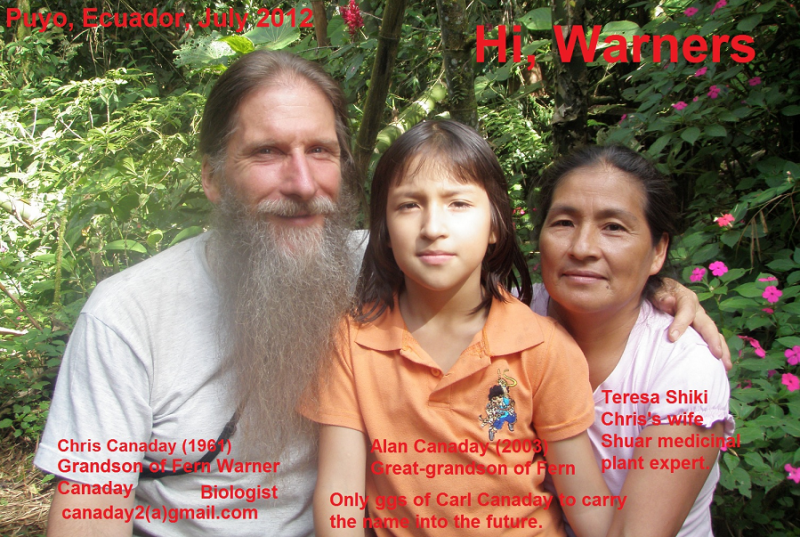 ChrisCanad...oto1.png
(Filesize: 924KB)
ChrisCanad...oto1.png
(Filesize: 924KB)
-
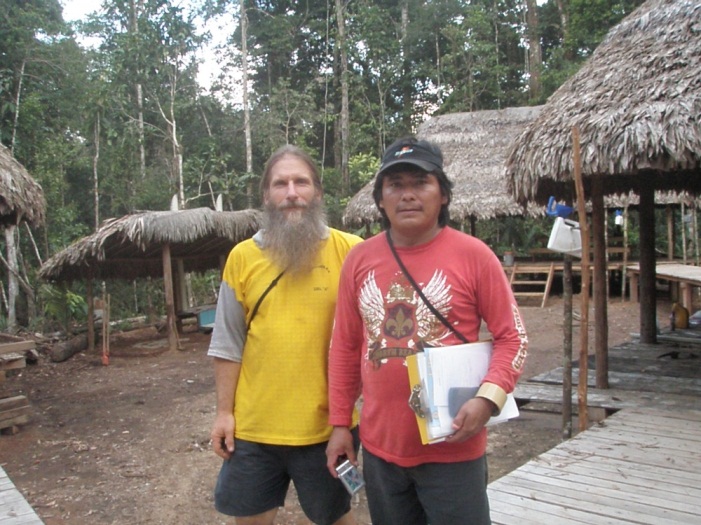 ChrisCanad...oto2.jpg
(Filesize: 157KB)
ChrisCanad...oto2.jpg
(Filesize: 157KB)
-
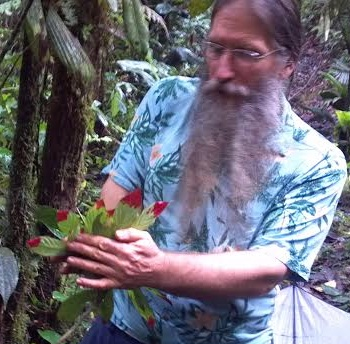 ChrisCanad...oto3.png
(Filesize: 320KB)
ChrisCanad...oto3.png
(Filesize: 320KB)
The following user(s) like this post: Elisabeth, Carol McCreary, cecile, Florian, AquaVerde, susu, PatrickBBB
Please Log in to join the conversation.
You need to login to reply- secretariat
-
 Topic Author
Topic Author- Moderator
- SuSanA secretariat currently allocates 2 full time person equivalents of time from members of GIZ Sustainable Sanitation Team: Arne Panesar, Alexandra Dubois, Maren Heuvels, Teresa Häberlein, Daphne Manolakos and Bettina-Sophie Heinz.
Featured User (5) in May 2014 is Chris Canaday from California/ Ecuador!
Dear all,
Thank you to all who contributed to the Forum discussion on the renaming of the "User of the month" . The new title will be “Featured User”!
We previously recognized four forum contributors as Users of the Month for their outstanding contributions on the forum – FH Mughal, Florian Klingel, Doreen Mbalo and Kris Makowka (forum.susana.org/forum/categories/145-featured-users).
As the first “Featured User” under this new name, we are pleased to announce the 5th recognized forum user:
Chris Canaday for his frequent, considerate, detailed, helpful and interesting forum posts which often have a focus on environmental sustainability aspects.
Here is a link to his forum profile (visible only for logged-in users): forum.susana.org/forum/profile/userid-88
Chris is one of the earliest members of SuSanA – with registration number 88 – and has been contributing to the forum since the start in 2011. Chris regularly contributes detailed posts, particularly on the theme of urine-diverting dry toilets (UDDTs), but also on urine diversion processes in general, composting processes, soil microbiology, using compost as cover materials in UDDTs, and on health aspects. Based on his work in Ecuador, he strongly engages on the issues of UDDTs and failings of flush and sewer-based toilets, with a particular emphasis on the importance of environmental sustainability and conservation.
Although Chris is originally from California, USA, he has lived in Ecuador for the last 23 years, where he currently works primarily out of Omaere Ethnobotanical Park , which is located at the red marker on the map below.
Despite being hampered by a low bandwidth for internet access, Chris makes a concerted effort to make regular postings on the forum, and respond to questions and comments in detailed and thorough responses. For example, he has had a detailed discussion with the lead researchers about the “Blue Diversion Toilet” from EAWAG: forum.susana.org/forum/categories/106-us...mit=12&start=12#5673. Chris regularly uses his experience in Ecuador and as a trained biologist and conservation specialist to provide examples and cases from the field. He got deeply involved in reviewing and improving the UDDT Technology Review by GIZ: forum.susana.org/forum/categories/34-uri...by-giz-now-published .
More recently, he revealed his knowledge on the topic of faecal transplants: forum.susana.org/forum/categories/26-hea...cal-transplants#8556
The statistics on Chris’ posts ( forum.susana.org/forum/categories/userlist ) have been consistently high: Chris has made 108 posts (putting him in 14th place in terms of posts made), he has received 37 likes (9th place), and 10 Karma points (5th place).
In two further posts we will provide a two-part interview with Chris. Please feel free to respond to these posts about how Chris’ contributions have influenced your own work, or how you have come to know Chris through the Forum.
We greatly appreciate Chris’ contributions on the forum, particularly from his experience working in the sanitation field - on the ground - with UDDTs and related processes. Thank you very much, Chris!
Posted by Roslyn and Elisabeth (on behalf of the SuSanA secretariat)
Posted by a member of the SuSanA secretariat held by the GIZ Sector Program Water Policy – Innovations for Resilience
Located at Deutsche Gesellschaft für Internationale Zusammenarbeit (GIZ) GmbH, Bonn, Germany
Follow us on facebook: www.facebook.com/susana.org, linkedin: www.linkedin.com/company/sustainable-sanitation-alliance-susana.
Located at Deutsche Gesellschaft für Internationale Zusammenarbeit (GIZ) GmbH, Bonn, Germany
Follow us on facebook: www.facebook.com/susana.org, linkedin: www.linkedin.com/company/sustainable-sanitation-alliance-susana.
Attachments:
-
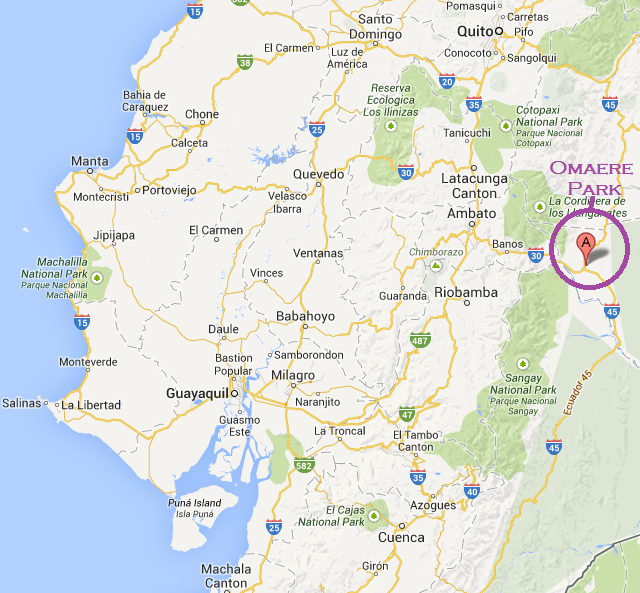 Ecuador-Om...Park.png
(Filesize: 374KB)
Ecuador-Om...Park.png
(Filesize: 374KB)
-
 OmaerePark.png
(Filesize: 614KB)
OmaerePark.png
(Filesize: 614KB)
-
 featureduserlogo.jpg
(Filesize: 49KB)
featureduserlogo.jpg
(Filesize: 49KB)
The following user(s) like this post: Florian, AquaVerde, PatrickBBB
Please Log in to join the conversation.
You need to login to reply
Share this thread:
- Forum
- categories
- Announcements and miscellaneous
- General announcements
- Featured Users
- Featured User (5) in May 2014 is Chris Canaday from California/ Ecuador!
Recently active users. Who else has been active?
Time to create page: 0.567 seconds








